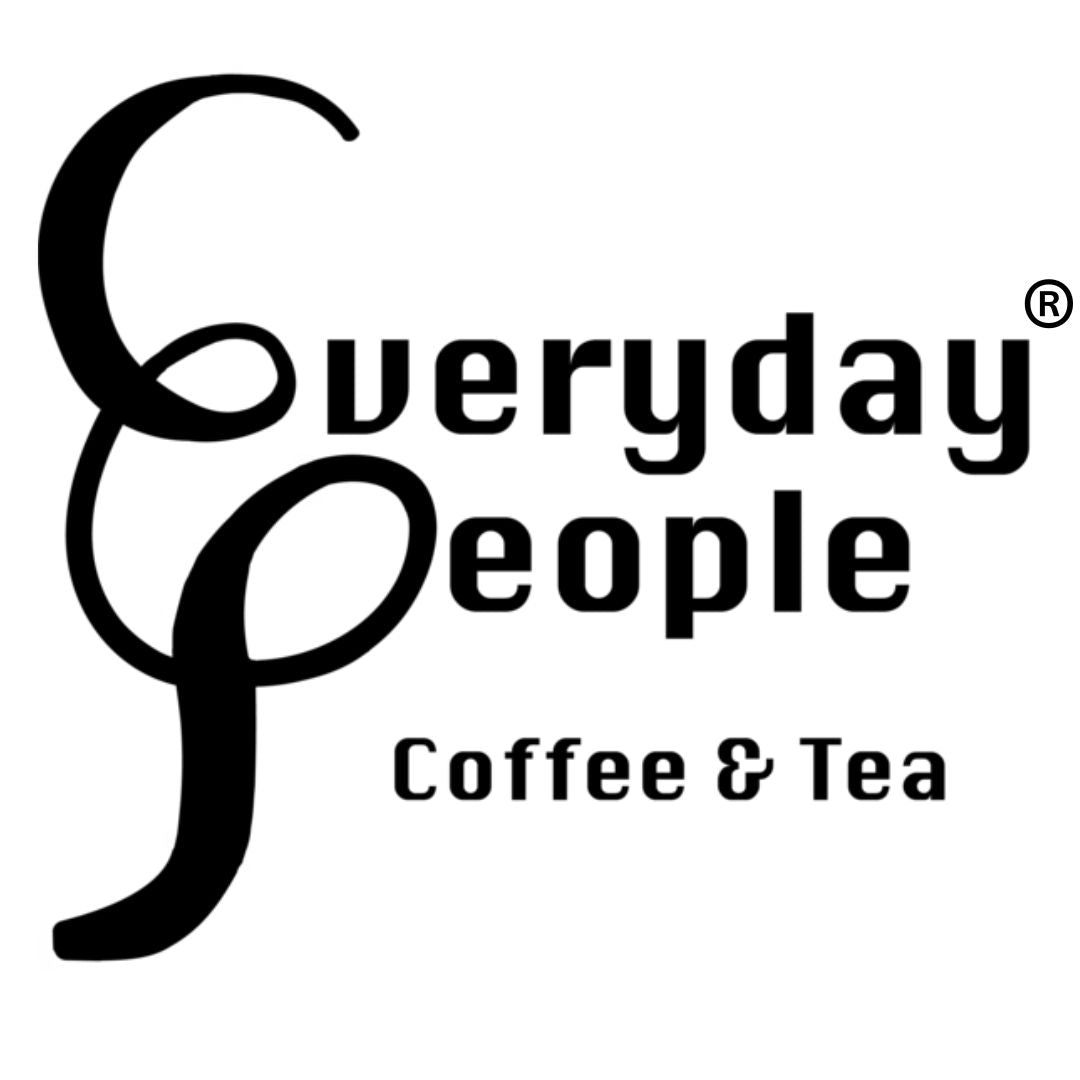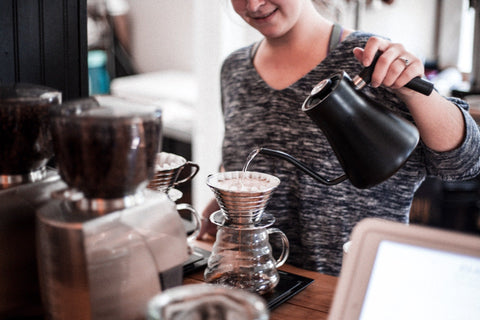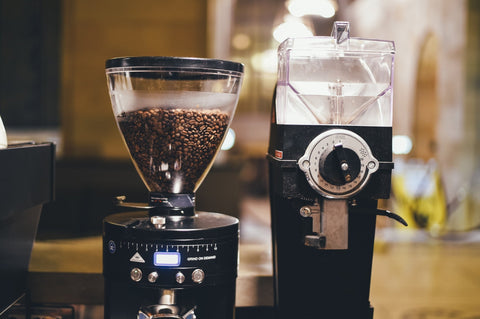If you’re looking for a flavorful cup of coffee in the morning, try brewing with a pour over!
How to Use a Pour Over:
You'll Need:
- A pour over (this recipe is best for brewing up to 2 cups of coffee on a pour over)
- A filter (any material)
- A way to heat water (ie kettle)
- Coffee (whole bean or ground)
- A coffee grinder (if using whole bean coffee)
- A way to measure your coffee (ie a tablespoon or a scale)
- (optional) A thermometer
You'll Need:
- Boil the amount of cups of water you need for your coffee (plus a little extra for any water that boils off). While the water is heating up, measure how much coffee you need depending how many cups of coffee you’d like to make. If you enjoy a stronger tasting cup of coffee, you can increase the amount of coffee you brew:
- 2 cups of coffee or 16 oz: Measure about 1.5 tbsp of coffee or 29g.
- 1 cup of coffee or 8 oz: Measure about 1 tbsp of coffee or 16g.
Then, grind your coffee medium-fine (table salt texture).
2. Wait about 1 minute and a half for water to cool, 201°F (94°C) if measuring the water temperature.
If you’re using a metal filter or a cloth filter, you can skip folding and pre-wetting the filter. Simply heat the mug or carafe with hot water.
If using a v60 and a paper filter, fold the paper filter along the seam. Open the filter and place in the pour over. Pour the hot water into the pour over, wetting the entire filter. Let drip into the mug or carafe. Swirl the hot water around the mug or carafe to heat it up (prime it), then discard the water from the mug or carafe.
3. Pour #1, the “bloom” pour
Put the medium-fine coffee grounds into the pour over and tap the pour over gently to flatten and even out the coffee ground bed.
Pour in a spiral motion from the center of the coffee bed to the outer edge of the bed until all the coffee grounds are saturated. If using a scale, pour double the amount of water to coffee grounds. Let the coffee “bloom” for 30 seconds. This step is especially important for coffees that are freshly roasted (less than 2 weeks before brewing)!
- 2 cups of coffee or 16 oz: Pour 60 mL of hot water.
- 1 cup of coffee or 8 oz: Pour 32 mL of hot water.
4. Pour #2, etc. (as needed)
Wait until the water level decreases to the level of the coffee bed (about 30 - 45 seconds) until you start pouring again.
For each needed pour, pour in a spiral motion over the grounds for about 100 mL of water, or slightly over when all the coffee grounds are saturated.
Once you pour all the necessary water, wait until all the coffee drips into the mug or carafe. You know you did a great pour if the coffee bed is flat after you finish brewing!
5. Enjoy
Finally, the best part – drink and enjoy!!
If you like cold coffee instead, you can brew through the Japanese cold drip method!
- 2 cups of coffee or 16 oz: Measure about 28 g of coffee, grind medium (sand texture) and pour 236 mL of hot water on top of 236 g of ice
- 1 cup of coffee or 8 oz: Measure about 14 g of coffee, grind medium (sand texture) and pour 118 mL of hot water on top of 118 g of ice
All in all, the entire pouring and dripping process starting from Pour 1 should take about 3 minutes. If it drips for way more than about 3 minutes and you still find that the coffee tastes quite bitter, don’t worry - there are easy fixes for your next brew!
If the coffee tastes really bitter, you can play around with:
- coarsening the grind OR
- decreasing how much ground coffee you put in the pour over OR
- waiting for the water to cool down more before pouring it onto the coffee grounds
If the coffee is really sour, you can play around with:
- making the grind finer OR
- increasing how much ground coffee you put in the pour over OR
- pouring the water on the grounds when it is just off boil OR
- stirring the coffee grounds a little while it is brewing
Brewing Sustainably with a Pour Over
Consider:
- What material is your pour over and cup made out of?
- What material are your filters made out of?
- How is your coffee grown and sourced?
- What are you doing with your coffee grounds or coffee packaging after brewing?
What material is your pour over and cup made out of?
Invest in a glass, metal, or ceramic pour over instead of a plastic one. While plastic is a durable and cheaper alternative compared to glass or metal, plastic never biodegrades. Furthermore, high temperature water when brewing coffee in a cheap plastic pour over may leach plastic into the coffee - yielding an unhealthy and plastic-tasting cup of coffee. “Plastic” is a flavor note that we definitely don’t want to find in our coffee. There are many high quality pour overs designed with glass, metal, and ceramic materials such as the glass, copper, and ceramic V60, the glass Chemex, the metal Kalita Wave, and the ceramic Origami dripper. These pour overs are also a beautiful addition to your kitchen counter.
What material are your filters made out of?
Paper is not the only material you can brew coffee with. There are also reusable metal and cloth filters available to use. Cloth filters are an affordable substitute for paper filters, though they require a little more time and equipment to clean. Metal filters are more expensive, but a good investment that you can reuse over and over again with minimal extra effort for upkeep.
If you still want to use paper filters, you can opt for buying unbleached, brown paper filters, which are filters that do not go through the dyeing process. Just be sure to pre-wet the filter before putting the coffee grounds in the pour over to get rid of any papery taste! You can also compost your paper filters after brewing with it. In barista and home brewing circles, some have experimented with reusing a paper filter multiple times -- with positive results in their cups of coffee!
How is your coffee grown and sourced?
Consumers can make better coffee choices to support a more environmentally friendly industry through choosing a sustainably-sourced, high-quality coffee. These choices can have a major impact on the global ecosystem. Conscious shopping looks like checking for certifications like organic and fair trade. Organic certifications indicate that the coffee was grown without the use of synthetic pesticides that might be harmful to the overall environment, and fair trade certifications tell the consumer that farmers were paid a premium over the market price for their coffees.
There are also other labels that coffee consumers can look for on their bags of coffee or on a coffee company’s information. The customer can check if the coffee is shade grown or bought through direct trade. Shade grown coffee is a more sustainable way of growing coffee than methods that maximize farm productivity. Shade-grown coffee methods promote biodiversity, prevent soil erosion through the shade trees extensive root network, provide nutrients from fallen litter, and decrease the amount of carbon in the air through fixation by plant tissues. Direct trade is an indicator that the coffee company works with the coffee farmers themselves to either set premium prices or even collaborate to support the farmers’ community.
What are you doing with your coffee grounds and packaging after brewing?
Dumping coffee in the landfill means that those coffee grounds will produce methane, a harmful greenhouse gas. You can divert your grounds from the landfill through composting or repurposing your coffee grounds. Composting is an easy, environmentally-friendly action you can do with your used coffee grounds. Simply throw your grounds into your compost pile. When composted, the coffee grounds add nitrogen to the soil. You can also add the grounds right into your garden as fertilizer -- it helps with soil drainage, aeration, and water retention.
After brewing, we can look at repurposing our coffee grounds. Some recipes even call for coffee grounds as rubs or pastry flavoring. You can even use coffee grounds to absorb unwanted odors in your fridge or your trash can. You can also use it as a body scrub to exfoliate dead skin from your body or a way to absorb any residue on your scalp or hair. The journey for coffee doesn’t have to stop in your cup or the landfill.
The coffee lifestyle usually comes along with packaging, so we can be diligent in either recycling or composting any coffee bags or packaging that we come across. Check your coffee bags for the recycling symbol. If it does not have any lamination or plastic in it, you can also use it as brown matter for yours or your community garden’s compost pile.
Understanding the process and mechanism of how coffee has been carefully tended by people all across the world, we at Everyday People Coffee and Tea source sustainable, single origin coffees from farmers, ensuring that those farmers are also provided equitable wages to sustain a livelihood that depends on the coffee trade. We are deeply committed to sourcing quality beans to produce our premium coffees. Our coffee is roasted in a registered and approved FDA facility adhering to sustainable practices.
Let us know how your coffee journey is going at our Instagram @everydaypeople_coffee or our contact form!



